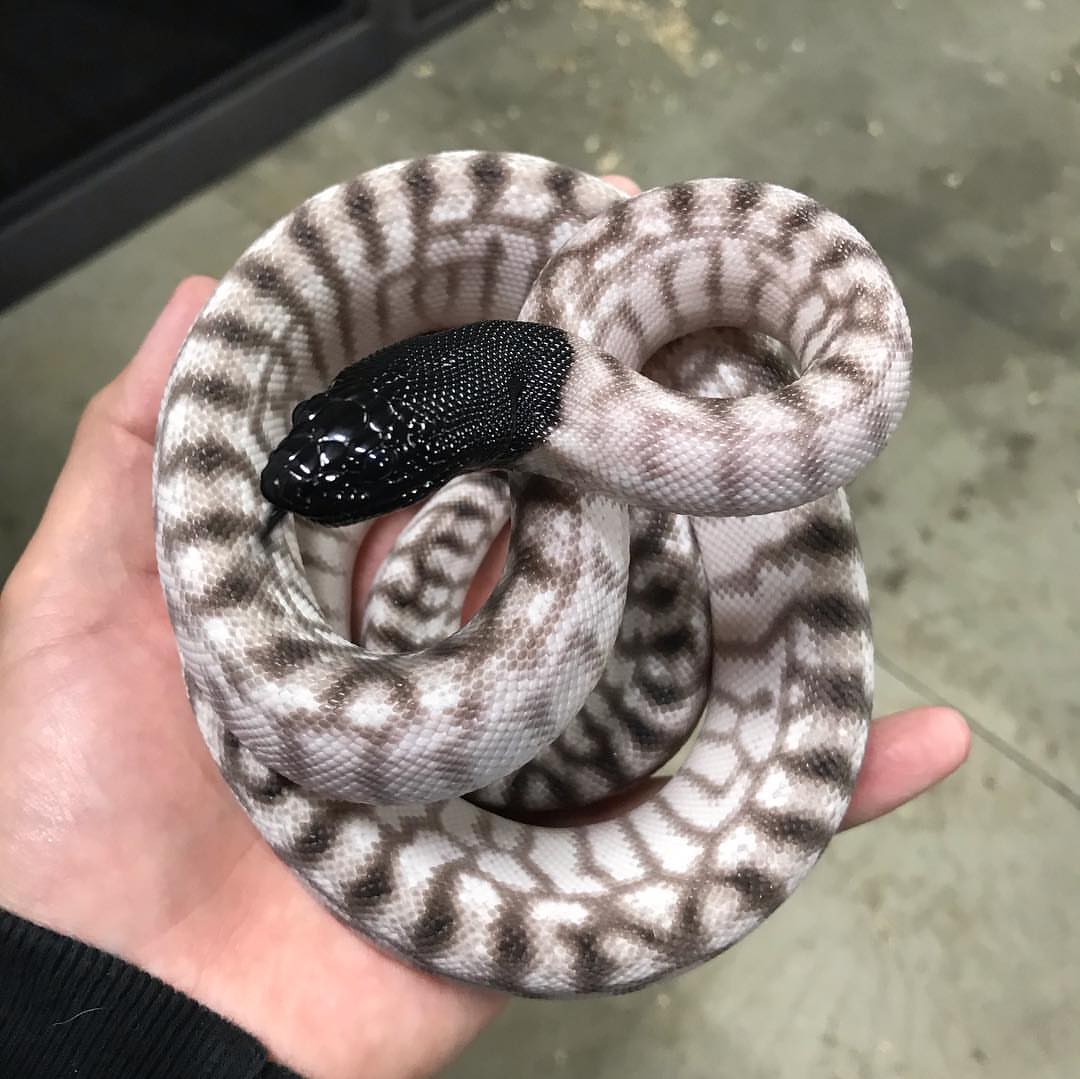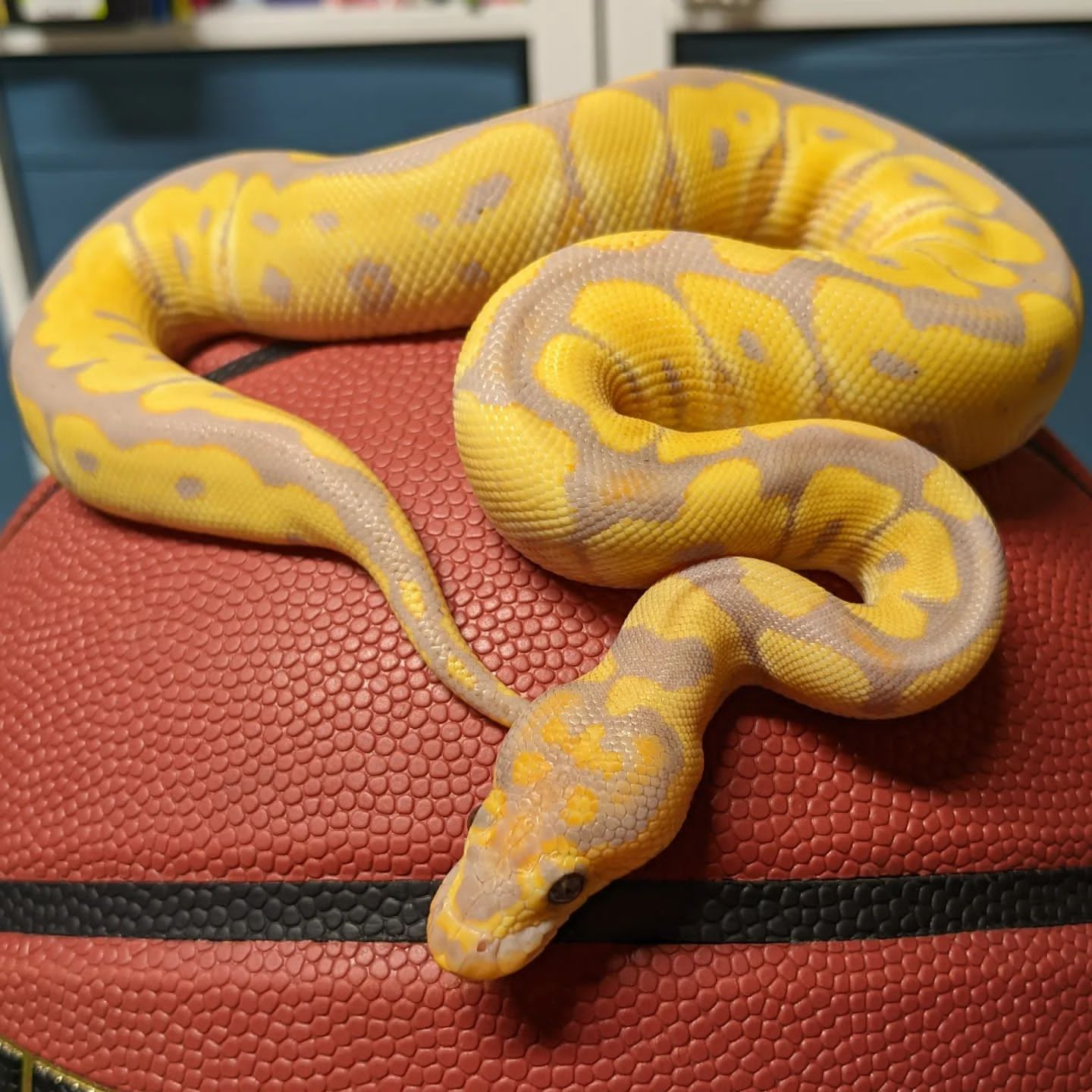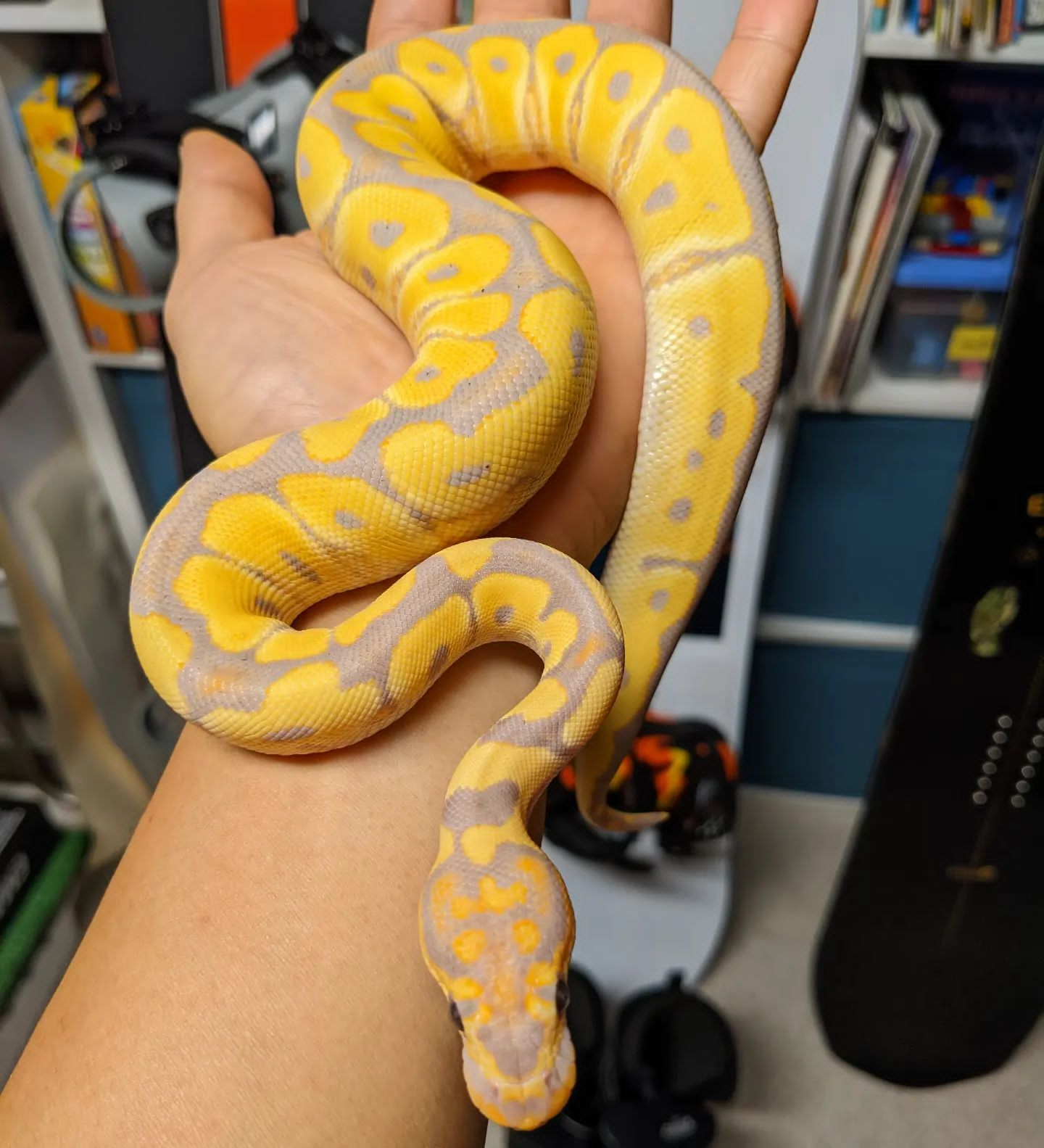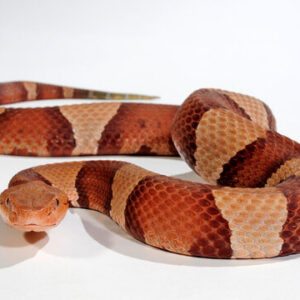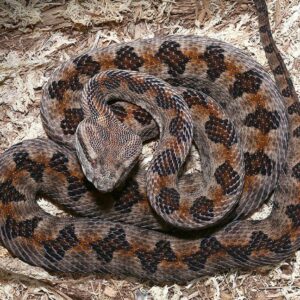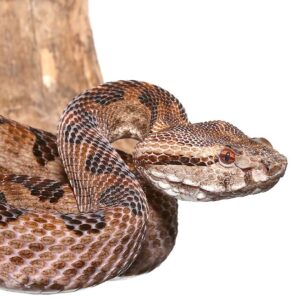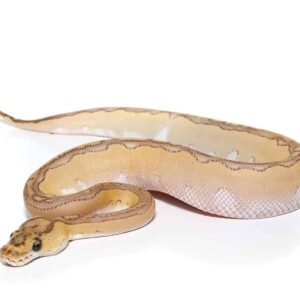Banana Clown Ball Python For Sale
$450.00
Banana Clown Ball Python are a kind of ball python that is known for their streaks of yellow and black spots. This unique color makes them stand out contrasted with the usual wild-type black and brown ball Pythons.
Instead of the usual base of brown and black with tan and tan blotches, these ball Pythons come with a gray or lilac base that has yellow and the tan the blotches.
The yellowish spots on their bodies are what give them the nickname “banana”.
Furthermore,
First morphs were discovered within the natural world in 2003 through West African locals. It was believed to be caused by an unusual mutation. These kinds of mutations are very uncommon and have a very low likelihood of surviving.
Will Slough heard about this banana plant and brought the snake that was found in West Africa.
Many believed that the snake was a genetic defect. But, Will recognized this could be a new form of the snake and began to research as well as breed it as part of an initiative he dubbed “Banana”.
More so,
After many years of selective breeding, he proved right. It is actually a natural type of morph.
Slough created an initial clutch of chicks in 2003. The hatchlings were purchased for $20,000 per one.
The majority of Banana Clown Ball Python available for auction today are believed to come from the same individual Will import.
While ball pythons had been breeding in captivity since in the 1980s but 2003 was the first time that the pet trade was able to witness this form of morph (Banana Clown Ball Python).
Hence,
The good news is that banana ball pythons today are very easy to breed, and there is a lot of information about the breeder and inheritance.
Breeders often create and raise Pythons to make distinct morphs and then observe how mutations alter their patterns and colors.
There are many varieties of banana ball Pythons that come in a variety of colors and designs.
Certain morphs have blotches that are thinner and others display huge the blotches. The color may also change with certain individuals showing both bananas as well as all-white.
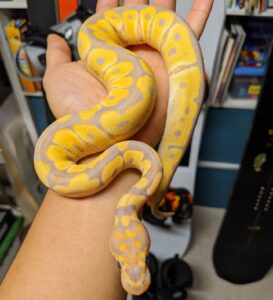
Description
The Banana Clown Ball Python is a captivating reptile species that has garnered significant attention among reptile enthusiasts. Known for its striking appearance, this python stands out due to its unique coloration and pattern. The Banana Clown Ball Python is a morph, meaning it is a genetic variation of the typical ball python, distinguished by its vibrant yellow and orange hues that resemble the peel of a banana, combined with intricate, clown-like patterns.
This morph was first discovered through selective breeding, a practice that involves pairing specific ball pythons to produce offspring with desired traits. The Banana gene, which gives rise to the distinctive yellow coloration, is a co-dominant trait. When combined with the recessive Clown gene, it results in the visually stunning Banana Clown Ball Python. Breeders have been particularly drawn to this morph not only because of its beauty but also due to the genetic challenge and excitement it presents.
Since its introduction to the reptile community, the Banana Clown Ball Python has soared in popularity. Its eye-catching appearance and relatively manageable size make it an attractive option for both novice and experienced reptile keepers. Typically, ball pythons are known for their docile nature and ease of care, and the Banana Clown variant is no exception. These traits contribute to its widespread appeal, making it a favored choice in the exotic pet market.
The fascination with the Banana Clown Ball Python extends beyond its aesthetic appeal. It represents the advancements in herpetoculture, showcasing how selective breeding can produce extraordinary and diverse morphs. Enthusiasts appreciate not only the visual allure but also the genetic intricacies involved in creating such unique ball pythons. As a result, the Banana Clown Ball Python continues to be a sought-after specimen, celebrated for its distinctive characteristics and the ongoing possibilities it represents in the world of reptile breeding.
Physical Characteristics and Coloration
The Banana Clown Ball Python is a remarkable and visually stunning reptile, celebrated for its unique physical attributes and distinctive coloration. One of the most striking features of this ball python morph is its brilliant yellow and lavender hues. The yellow color is often vibrant and can range from a bright, sunny shade to a more subdued, pastel tone. Complementing this yellow is the lavender coloration, which provides a beautiful contrast and adds complexity to the snake’s appearance. These colors are not just random patches but form intricate and appealing patterns across the python’s body.
Another notable characteristic of the Banana Clown Ball Python is its clown-like patterns. These patterns consist of irregular shapes and markings that give the snake a playful and almost whimsical appearance, reminiscent of a clown’s costume. The patterns are typically a combination of spots, stripes, and blotches, and they vary significantly from one individual to another, making each snake uniquely beautiful.
In terms of size, the Banana Clown Ball Python is comparable to other ball python morphs. On average, these snakes can reach lengths of 3 to 5 feet, with females generally being larger than males. Despite their modest size, their striking coloration and patterns make them stand out in any collection.
When compared to other ball python morphs, the Banana Clown Ball Python’s coloration and patterns are particularly distinctive. While other morphs may exhibit a variety of colors and patterns, the combination of yellow and lavender, along with the unique clown-like markings, sets the Banana Clown apart. This unique appearance not only makes them a favorite among reptile enthusiasts but also highlights the incredible diversity within ball python morphs.
Behavior and Temperament
The Banana Clown Ball Python is renowned for its docile and calm nature, making it an ideal choice for both novice and experienced snake enthusiasts. This species is generally non-aggressive, displaying a temperament that is both gentle and tolerant when handled properly. The Banana Clown Ball Python’s mild disposition significantly contributes to its popularity as a pet, as it tends to be more agreeable in human interactions compared to other reptiles.
One of the most appealing aspects of the Banana Clown Ball Python is its ease of handling. These pythons are typically very manageable, and when approached with care, they exhibit minimal stress or defensive behavior. It is crucial to support the snake’s body fully and move slowly to avoid startling it, as sudden movements can cause anxiety. Regular, gentle handling can help to further acclimate the snake to human contact, fostering a bond between owner and pet.
Despite their generally calm nature, potential owners should be aware of some behavioral quirks. For instance, the Banana Clown Ball Python can sometimes exhibit shy or reclusive behavior, especially when it is new to its environment. It may choose to hide during the day and become more active at night, aligning with its natural nocturnal tendencies. Providing adequate hiding spaces within its enclosure can help the snake feel secure and reduce stress.
Another notable behavior is the balling up response, which is a defensive mechanism where the snake curls into a tight ball with its head protected in the center. This is a common reaction to perceived threats and is a natural behavior for Ball Pythons in the wild. Understanding this behavior can help owners respond appropriately and ensure the snake feels safe and secure.
Overall, the Banana Clown Ball Python’s behavior and temperament make it a delightful and manageable pet. Its gentle nature, combined with its striking appearance, continues to captivate snake enthusiasts around the world.
Habitat and Enclosure Requirements
The Banana Clown Ball Python, known for its striking colors and patterns, thrives in a carefully controlled environment that mimics its natural habitat. Ensuring the proper enclosure size is crucial for the snake’s well-being. A minimum enclosure size of 40 gallons is recommended for an adult Banana Clown Ball Python, providing ample space for movement and exploration. It is essential to choose an enclosure that is secure, well-ventilated, and easy to clean.
Temperature regulation plays a vital role in the health of the Banana Clown Ball Python. The enclosure should have a thermal gradient, with a warm side maintained at 88-92°F and a cooler side at 78-80°F. This gradient allows the snake to thermoregulate by moving between the different temperature zones. A reliable heat source, such as a heat mat or ceramic heat emitter, should be used to maintain these temperatures. It is advisable to use a thermostat to prevent overheating and ensure consistent temperature control.
Humidity levels within the enclosure should be kept between 50-60%, replicating the tropical environment that the Banana Clown Ball Python is accustomed to. Proper humidity can be maintained through regular misting and the use of a substrate that retains moisture, such as coconut husk or cypress mulch. A hygrometer should be used to monitor humidity levels accurately, ensuring they remain within the optimal range.
Lighting is another critical aspect of the enclosure setup. While Banana Clown Ball Pythons are primarily nocturnal and do not require UVB lighting, a regular day/night cycle should be established to mimic natural conditions. A 12-hour light and 12-hour dark cycle is recommended, using LED or fluorescent lights for the day period.
In addition to temperature, humidity, and lighting, providing essential accessories can significantly enhance the snake’s environment. Hiding spots, such as commercially available hides or naturalistic caves, offer security and reduce stress. Climbing branches and artificial plants can also be added to create a more enriching and stimulating habitat. A shallow water dish should be available at all times for hydration and occasional soaking.
Diet and Feeding Guidelines
The Banana Clown Ball Python, like other Ball Pythons, has specific dietary needs that must be met to ensure its health and longevity. In captivity, their diet primarily consists of appropriately sized rodents, such as mice and rats. It is essential to choose prey that is no larger than the widest part of the snake’s body to prevent choking or regurgitation. Young Banana Clown Ball Pythons typically eat smaller prey items, such as pinkie mice, while adults can handle larger prey like adult mice or small rats.
Feeding frequency is an important consideration. Juvenile Banana Clown Ball Pythons should be fed every 5-7 days, whereas adults can be fed every 10-14 days. Monitoring the snake’s body condition is crucial; an underweight snake may need more frequent feedings, while an overweight snake might require a reduction in feeding frequency. It is advisable to establish a consistent feeding schedule to help the snake thrive.
Ensuring proper nutrition involves not only providing the right type and size of prey but also addressing any potential feeding issues. One common issue is a refusal to eat, which can be caused by stress, illness, or environmental factors. To encourage feeding, ensure the snake’s enclosure is set up correctly with appropriate temperature and humidity levels. Offering pre-killed prey is generally safer and can be more convenient, although some snakes may need time to adjust if they are used to live prey.
Supplementing the diet of a Banana Clown Ball Python with occasional vitamin and mineral supplements can also be beneficial, but it is generally not necessary if the snake is being fed whole prey items. It is important to consult with a veterinarian experienced with reptiles to address any specific dietary concerns or persistent feeding issues.
By understanding and meeting the dietary needs of the Banana Clown Ball Python, keepers can ensure their snake remains healthy and well-nourished throughout its life.
Health and Common Medical Issues
The health of Banana Clown Ball Pythons is paramount for ensuring their longevity and well-being. Like any other reptile, they can experience a range of health concerns and medical issues. Recognizing the signs of illness early and implementing preventive care measures are crucial steps in maintaining their health.
One of the most common health issues in Banana Clown Ball Pythons is respiratory infections. These can be identified by symptoms such as wheezing, excessive mucus, and difficulty in breathing. Ensuring the enclosure maintains appropriate humidity and temperature levels can significantly reduce the risk of respiratory infections. Another prevalent issue is parasitic infestations, both internal and external. Regular fecal tests and visual inspections for mites or ticks are essential for early detection and treatment.
Another serious concern is inclusion body disease (IBD), a viral infection that affects the nervous system. Symptoms of IBD include regurgitation, loss of coordination, and disorientation. While there is no cure for IBD, prompt veterinary consultation is necessary to manage symptoms and prevent the spread of the disease to other reptiles. Mouth rot, or infectious stomatitis, is another common ailment, characterized by swelling, redness, and pus around the mouth. Maintaining a clean habitat and providing a balanced diet can help prevent this condition.
Preventive care for Banana Clown Ball Pythons involves regular monitoring of their habitat’s environmental conditions, maintaining a proper diet, and ensuring adequate hydration. Regular veterinary check-ups, even when the python appears healthy, can help detect potential issues early. If any signs of illness are observed, such as lethargy, loss of appetite, or unusual behavior, it is imperative to seek veterinary assistance promptly.
By staying vigilant and proactive, owners can ensure their Banana Clown Ball Pythons lead healthy, fulfilling lives. Proper care and timely medical intervention can address common health issues and prevent minor problems from escalating into severe conditions.
Breeding Banana Clown Ball Pythons
Breeding Banana Clown Ball Pythons involves a thorough understanding of genetics, mating behaviors, and the specific care required for successful incubation and hatchling development. The Banana Clown morph is a result of combining the Banana gene, which is co-dominant, with the Clown gene, which is recessive. Understanding these genetic principles is crucial for producing this unique and vibrant morph.
When it comes to mating behaviors, Banana Clown Ball Pythons reach sexual maturity between 2 to 3 years of age. During the breeding season, which typically spans from December to March, it is important to ensure that both the male and female are in optimal health. Introducing the male to the female’s enclosure can stimulate breeding activity. Observing the snakes for copulation, which can last several hours, is necessary to confirm successful mating.
After a successful mating, the female will undergo a pre-lay shed about 20 to 30 days post-copulation. This is followed by egg-laying, which generally occurs 30 days after the shed. It is essential to provide a suitable nesting area with appropriate humidity and temperature to facilitate the laying process. Typical clutches range from 4 to 6 eggs.
Incubation of Banana Clown Ball Python eggs requires consistent temperature control, ideally between 88 to 90 degrees Fahrenheit, and humidity levels around 90 percent. Eggs generally hatch after 55 to 60 days of incubation. During this period, regular monitoring is crucial to ensure the conditions remain optimal.
The care of hatchlings is equally important. Hatchlings should be housed individually in small enclosures to reduce stress and encourage feeding. Offering appropriately sized prey, such as pinkie mice, and maintaining proper husbandry practices will support their growth and development.
Breeding Banana Clown Ball Pythons can be both challenging and rewarding. The process demands attention to detail and a commitment to the welfare of the animals. However, the result—producing stunning and healthy Banana Clown morphs—makes the effort worthwhile for dedicated breeders.
Conclusion and Final Thoughts
In conclusion, the Banana Clown Ball Python is a remarkable and captivating snake that stands out due to its striking coloration and manageable temperament. Throughout this blog, we have explored the unique attributes of this morph, from its vibrant yellow and orange hues to its distinctive clown-like patterning that sets it apart from other ball python varieties. These features not only make the Banana Clown Ball Python visually appealing but also a highly sought-after pet among reptile enthusiasts.
Caring for a Banana Clown Ball Python involves a commitment to providing a suitable habitat, proper diet, and regular health check-ups. Ensuring an optimal environment with appropriate temperature and humidity levels is crucial for the well-being of your pet snake. Additionally, understanding their dietary needs, which primarily consist of appropriately-sized rodents, will help maintain their health and longevity. Regular handling and interaction can also foster a bond between you and your Banana Clown Ball Python, making it a rewarding experience.
For those considering adding a Banana Clown Ball Python to their collection or as a first-time pet, it is essential to do thorough research and be prepared for the responsibilities involved. These snakes are relatively easy to care for, making them suitable for both novice and experienced reptile keepers. Their docile nature and manageable size further enhance their appeal as a pet, providing an engaging and visually stunning companion.
Ultimately, the Banana Clown Ball Python offers a unique combination of beauty, temperament, and ease of care. If you are looking for a captivating and manageable pet snake, this morph is certainly worth considering. With the right care and attention, a Banana Clown Ball Python can thrive and become a cherished addition to any reptile enthusiast’s collection.

